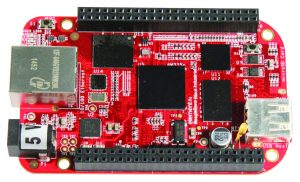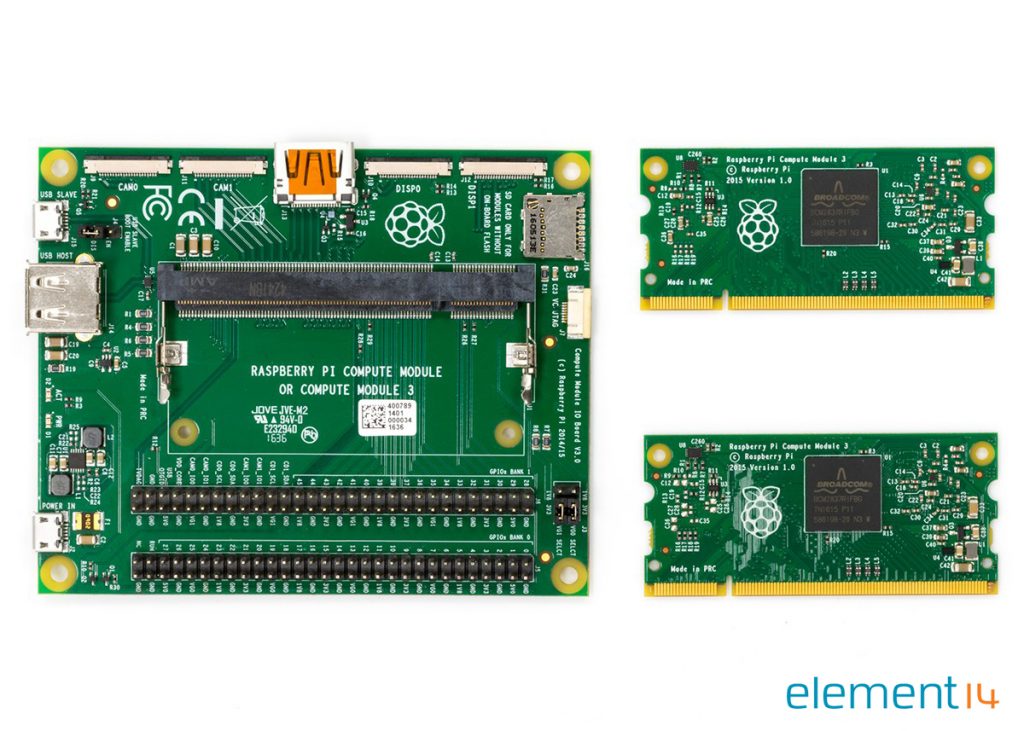Raspberry Pi, BeagleBoard and Arduino have captured the imagination of students and hobbyists alike with their easy-to-use development platforms. With sales of more than 19 million for Raspberry Pi alone, and a thriving community of enthusiasts, it seems the only question remaining is if this success, built upon capability, small size, low price and simplicity can be replicated in the professional design market, and whether single-board computers (SBC) and microcontroller-based development and prototyping platforms, are suitable for professionals to incorporate directly into their product designs.
The rise of easy-to-use prototyping platforms and development boards
In 2003, a team of engineers in Italy developed a low-cost, easy to use microcontroller based development kit that allowed people of all skill levels to make use of modern 8-bit microcontrollers in their projects. This marked the beginning of the Arduino™ platform, which paved the way for a wide variety of users to build and test electronic-systems ideas rapidly. Hobbyists, makers and even single professional makers could use Arduino hardware and its software-development environment as the base for their projects. This was followed in 2008, by the birth of the non-profit organisation BeagleBoard.org, expanding embedded-computation choices further. BeagleBoard.org was formed to bring modern microprocessor development into the hands of engineers and designers through a low cost, open source community supported development platform.
With the Arduino™ and BeagleBone platforms in place and continuing to evolve in the hands of designers, developers and hobbyists, one of the largest disruptions in both the consumer and industrial computing space was about to happen. A group based in the University of Cambridge’s Computer Laboratory were addressing the need for a low-cost computing platform that would allow students to learn how to program without the need for a home computer. The result was launched in 2012: a $35 SBC named Raspberry Pi. Although initially designed as a tool for students to learn programming, the Raspberry Pi was adopted by makers, designers, students as well as professional engineers, and helped to launch the current boom in SBCs and electronic prototyping platforms.
Using development platforms in prototyping and professional design
Prototyping platforms and development boards span a wide range of functionality, from microcontroller-based solutions though to SBCs, which are fully functional computers in their own right. Their functionality makes them suitable for a variety of use-cases, from IoT sensor nodes through to smart-home automation hubs and Industry 4.0 control systems. Even when applications call for specialised I/O interfaces, such as RS485 communications for industrial transducers or environmental sensor subsystems for monitoring conditions in the home, designers can extend the capabilities of the development board with add-on modules, which depending on the platform may be known as shields, HATs, or capes.
This combination of ‘off-the-shelf’ and flexible, functionality add-ons create real benefits when using in proof-of-concept prototyping as well as design. Whether a project needs custom hardware, third-party add-ons or just the base board, the availability of a fully-formed, off-the-shelf SBC or prototyping platforms let developers get started immediately on software for the intended application. This accelerates time to market as well as saving on the significant cost of developing a complete board from scratch. The open-source nature of the hardware design itself also plays an important role in assisting development, giving engineers ready access to the design data and extensive documentation used to create each platform. This is enhanced by a wealth of support from communities, such as the Raspberry Pi community, which enable developers to build on other people’s use-cases and reach out to others for advice when needed
BeagleBone Black Industrial
As Raspberry Pi, BeagleBoard and Arduino look to the professional application market for their next phase of growth, they are making boards available that address more needs for the professional designer. Both BeagleBoard and Raspberry Pi have versions optimised for professional use, such as the BeagleBone Black Industrial and the Raspberry Pi Compute Module. The latest launch from Raspberry Pi, the Raspberry Pi 3 Model B+ also includes the option for Power over Ethernet through a HAT, support for dual-band wifi (2.4 and 5 Ghz) and modular compliance, reducing upfront costs as developers go through product certification. Aimed at the IoT, Arduino’s highly compact MKR series also provides compact options for combining local intelligence based on the Arm Cortex-M0+ processor architecture with a variety of wireless interfaces. By selecting different MKR modules, designers can build applications that can connect to local wireless networks using Bluetooth or Wifi or opt for long-distance communications using cellular connectivity. The common processor architecture among the MKR modules lets engineers standardise the design process for different variants of a product.
Raspberry Pi Compute module 3 (shown together with the development kit)
Farnell, as an official manufacturer of both the Raspberry Pi and BeagleBoard boards, can also customise boards, letting customers add, for example, more power or memory, and ultimately, providing a faster to market and cheaper alternative than building a board from scratch. An example of customisation can be seen in the module at the heart of FutureHome’s Smarthub. Based on the Raspberry Pi Compute Module 3, the Smarthub is the server for FutureHome’s home automation system, which enables lighting, heating and motion sensors to be controlled through an iPhone or Android app. Futurehome used a customised board, developed with Farnell, that integrated the Pi Compute Module and custom wireless baseboard to power a home-automation gateway.
Considerations for design engineers
There are, however, a number of factors that should be considered when planning to use an off-the-shelf board for either prototyping or design:
- Ongoing supply: Prototyping platforms and development boards are highly cost effective when used through to production, but as with any off-the-shelf product, there is a risk that a supplier may cease production as they move onto newer designs, which could impact your product significantly. The vendors of these prototyping platforms recognise this issue and are now committing to ‘manufacture periods’ to support professional use. The latest Raspberry Pi 3 Model B+ and BeagleBone Black industrial, for example, are both guaranteed to be in production until 2023.
- Form factor compatibility: A further element to consider is the compatibility between generations within a SBC family. One must ensure that the pinout and physical form factor is the same as your designed-in board otherwise expensive redesign might be required. Again, manufacturers are responding to this need and the latest launch from Raspberry Pi maintained the same pin out and physical form factor as the previous board to maintain compatibility. The Raspberry Pi Foundation is also committed to maintaining the SODIMM form factor for any future compute modules thus making upgrading straightforward.
- Temperature range: The required operating temperature range of the final product will be often determined by the component on the board with the poorest temperature specification. The operating temperature specification for standard SBC models manufactured by Raspberry Pi, BeagleBoard and Arduino have relatively narrow operating temperature ranges, meaning that their use in industrial applications could be limited, however there are options – both Raspberry Pi and BeagleBoard have devices developed specifically for professional use that extend temperature ranges significantly: BeagleBone Black Industrial (-40 to + 85 °C) and Raspberry Pi Compute Module 3 (-25 to +80 °C).
- Product compliance: In general, SBCs and other development boards are supplied with full CE certification and will therefore conform to all applicable EU directives and safety standards. Nevertheless, CE marking and product certification, particularly for a product that incorporates wireless connectivity, is more complex for a design that goes into a larger end system, meaning that the full design and components will often need to be recertified. Manufacturers are supporting customers by providing modular compliance to reduce the need for recertification: one example being the WiFi interface on the Raspberry Pi 3 Model B+ which comes with modular compliance, so that alterations around the WiFi module do not require recertification
- Functionality: Standard SBCs may just not meet your needs and although there is a broad range of HATs, Capes and shields available for rapid designing and prototyping, they may not be appropriate for your final design. As noted above, options are available to customise SBCs but this will require a trade-off between cost against design time and required form factor.
SBCs and prototyping platforms provide easy, available and affordable routes to bring professional designs quickly to market. Start-ups entering the market can be designing for volume product sales as SBCs can help in speeding up the design process and helping them take advantage of the growth curve in applications for the IoT, smart home and Industry 4.0. This nimbleness and flexibility of using an off-the-shelf solution brings real benefits for all customers, from the single professional maker to larger established businesses, these new emerging ‘professional ready’ boards will continue to expand and shorten time to market for all types of companies.
Source: Electronicsweekly












